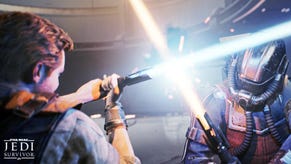Lorelei and the Laser Eyes review - art, ghosts, and perfect puzzles intertwine
Plight at the museum.
Lorelei and the Laser Eyes unfolds like an origami star. The more you play Simogo's logic puzzle game, the more unexpected complexity you find folded in it, flattened neatly into an unassuming, pretty exterior. You've arrived at an aristocratic hotel in Europe. Your handbag carries keys for your car that won't start, and tampons. You're missing all of the important answers, like where, when, or who you are, but the puzzle of your existence is at first only unsettling. Then it consumes you.
How could it not? Lorelei and the Laser Eyes is a proud puzzle game. Everything in it is a supernatural puzzle, from discovering who brought you to the hotel to figuring out how to pour complimentary espresso. But the game most commonly relies on math puzzles which, to their credit, can often stand on their own outside the context of the game. So, while the "instruction manual" I unearthed from my protagonist's glove compartment recommended I use a pencil and paper to complete Lorelei, I found it more satisfying to play the game like it was intended for text message co-op. It always helped to have a second opinion, especially since the game connects every challenge with an abstruse story about art transcending reality, with deadly consequences.
In this sense, Lorelei will be very familiar to fans of Layers of Fear and Game Grumps' 2023 puzzle horror game Homebody. Lorelei shares notable structural and thematic similarity to the latter, especially, down to the inscrutable supercomputer hidden somewhere in the house. But, like Layers of Fear, Lorelei's story treats art like it's a horrible father - a bottomless pit of need looking for a building to burn down. These overblown stories tend to disappoint me, since I think art makes a more effective outlet than demon. In any case, like both of these games, Lorelei makes you understand that your primary functions are to walk around an artist's mansion filled with freaky, reality-bending puzzles, and then click on them like you aren't afraid of the space-time continuum.
On my Switch review copy, the clicking part was occasionally frustrating - there were no back or cancel buttons, so if I inspected something like a suspicious clock or portrait, I was forced to attempt the puzzle it inevitably revealed itself to be. When I failed, the game immediately cut to a black loading screen instead of allowing me to seamlessly retry the puzzle the way Resident Evil 4 does, with its many comparable mismatched statues and runes. It made puzzle solving, at times, feel unnecessarily frustrating, and I found myself losing patience and interest in problems I was otherwise intellectually invested in.
Lorelei, to its credit, offers a range of puzzle types to break the tension. Aside from a rote cluster of trivia questions, which relied on the quickly overwhelming number of torn book pages and typewriter notes I started collecting, I'd always leave a solved puzzle feeling surprised satisfaction. Many of the game's brain-teasers strike the ideal balance between challenging and obtainable - I felt respected by the game I was putting paranoid hours into. I had trained myself not to overlook beckoning piano keys or wine bottles, or any other hotel feature. There were answers in them, there were answers everywhere.
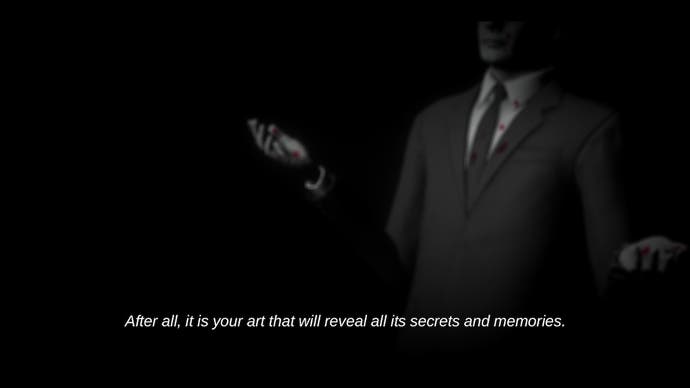
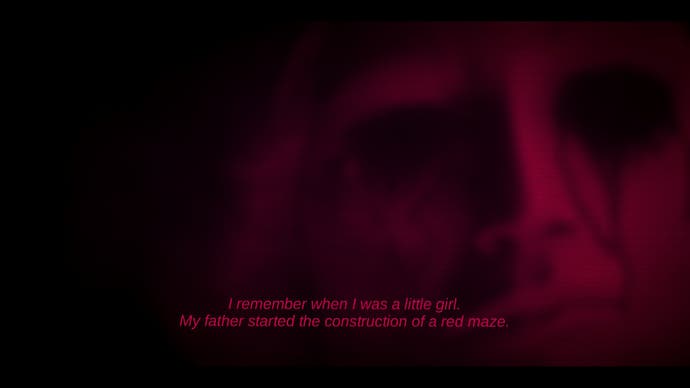
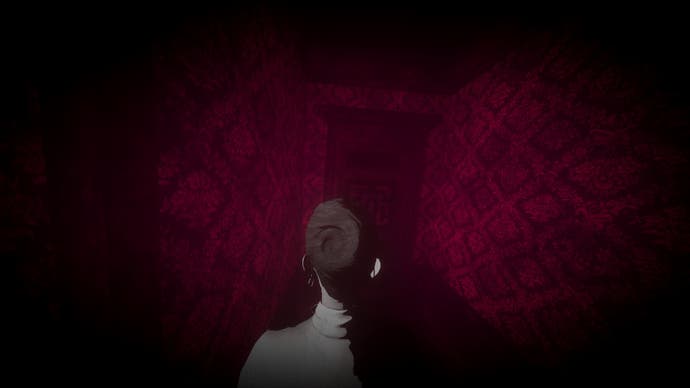
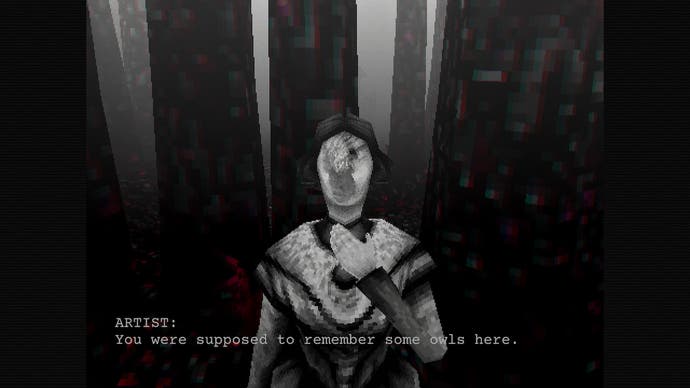
While the majority of Lorelei's puzzles involve math, as I previously mentioned, or identifying patterns, a fascinating subset presents surreal games to play on computer terminals and consoles hidden around the hotel. One set of buggy PS1-style puzzles turned my protagonist into a low-poly shell of herself. They forced tank controls on me, too, so, in one in-game video game, I navigated a sparse forest anxiously anticipating hollow-eyed ghosts - there are many hovering and leaking red fluid all over Lorelei. I also walked into boulders.
I thought the puzzle's inventiveness was impressive, anyway. It acted as a testament to Lorelei's singular command of taste and style. The game is restrained and interdimensional. It handles this dichotomy well, with the palpable restraint of an Ingmar Bergman movie. Like The Silence (1963), Lorelei displays its empty European hotel in muffled black and white. Its lazy swinging chandeliers give off grey light - though special, otherworldly things like paint and blood appear in candy apple red. Plump apples and faceless men in top hats are recurring images in Lorelei, too, recalling René Magritte's famous 1964 painting, "The Son of Man." But the game's elusive protagonists are nonchalant about their missing faces and, when they're beset by otherworldly visions, neon pink eyes. Especially the player character.

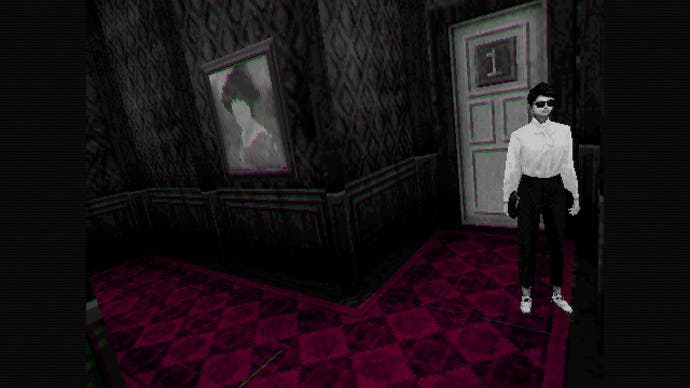
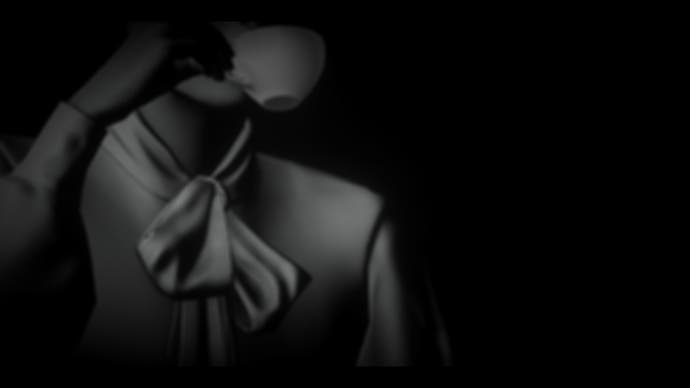
In the 17 hours it took to reach 99% completion with the game, I got to know the nameless woman as well as I could. I got used to watching her hair, brushed into an elegant French twist, bobbing across the game's fixed-camera angles. These helped me identify hidden objects, doorways, and, as the game phrases it, "American dollars" I could snag to buy magical experiences (that I won't spoil here). I ventured deeper into the hotel and its surrounding forest, solving puzzles to unlock shortcuts, discover keys, and gain mystic knowledge. The woman remained impassive. She walks at a respectable pace - except for after I learned to gulp espresso, which lets you run for a limited period of time - on clicky loafers. She's always wearing massive, black Dolce & Gabbana-looking sunglasses, so I kept glancing at her "stress level" from where it pulses in the game's inventory for signs of tension… Nothing. Just a steady heartbeat.
I, however, could feel my palms sweating on my Switch controller as I reached for new items, like a magician's red rose, or a journal password-protected by the moon. Lorelei encourages you to lean in close and overthink all of these spells and minutiae - anything could be a portal, even a zodiac sign, even a broken window. And, more often than not, the obscure fact I'd spent an hour squinting at did, indeed, end up being a clue.

The woman has a photographic memory divided into components that make up the inventory: maps, magazine clippings, prophecies, messages from the past, etc. Her implicit obsessiveness is contagious, and it amplifies the game's horror elements, which never make it into overt abominations like jumpscares or realistic gore. It's just that the hotel's wallpapered hallways seem to have a sinister air bonded to them, like cigarette smoke. Or, I noticed an abnormal flush in an old woman's eyes.
By necessitating fastidious attention to detail, the game teaches you that your final goal is simply to understand. Many of its most frightening moments are images you can't make sense of. Understanding, on the other hand, lowers your anxiety. It should grant you courage to scour the fractured world Lorelei built for you. In that world, there's no distinction between death and art. Time is a circle, like Nietzsche guessed, and Lorelei and the Laser Eyes asserts this fact in some of the most visually and technologically stunning scenes I've ever witnessed in a game.
But, who are we kidding? You'll never have it all figured out, and Lorelei's story stays impenetrable even after it's completed. Art can't win against death. It can only help us pass the time.
A copy of Lorelei and the Laser Eyes was provided for review by Annapurna Interactive.



